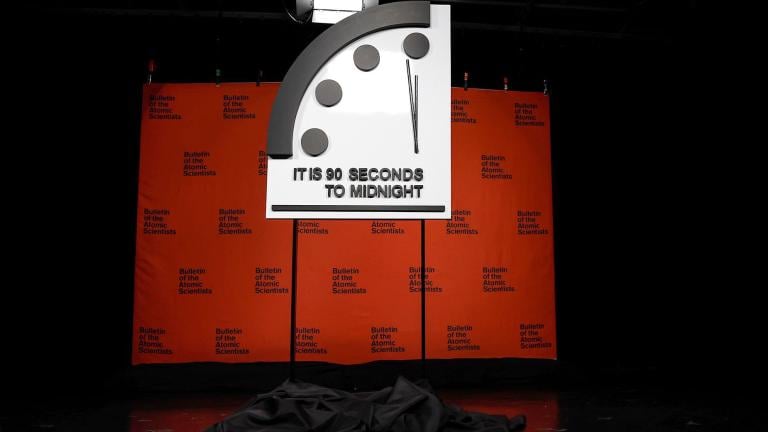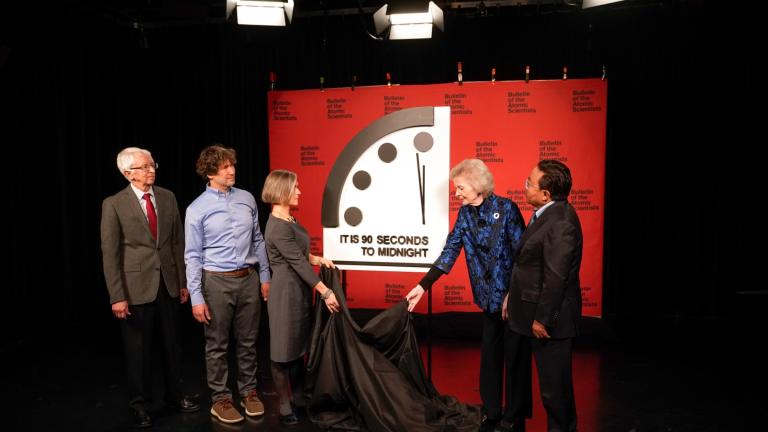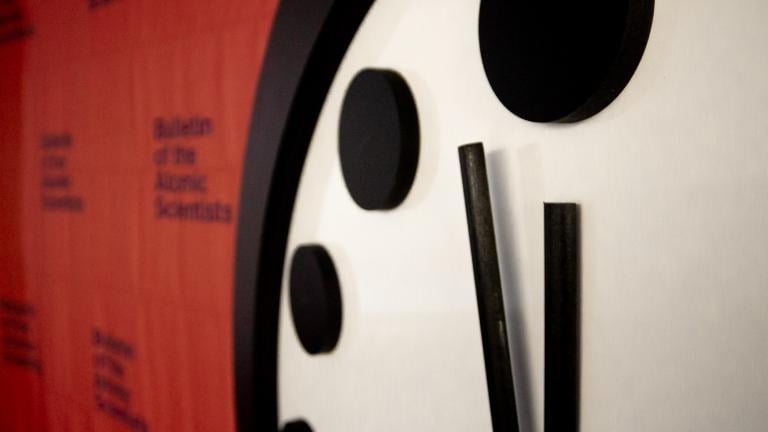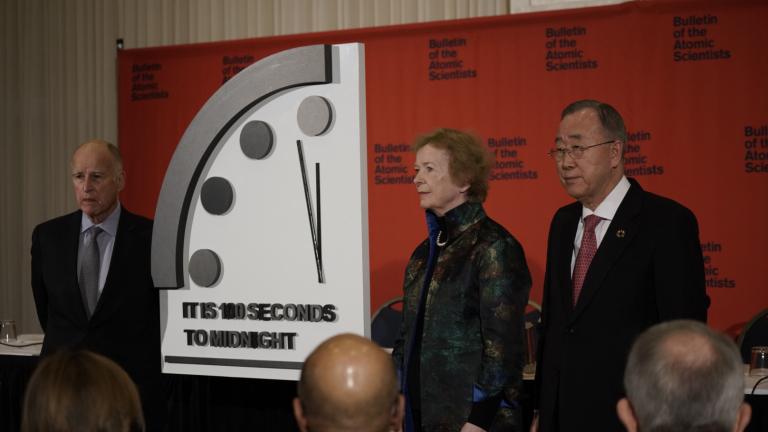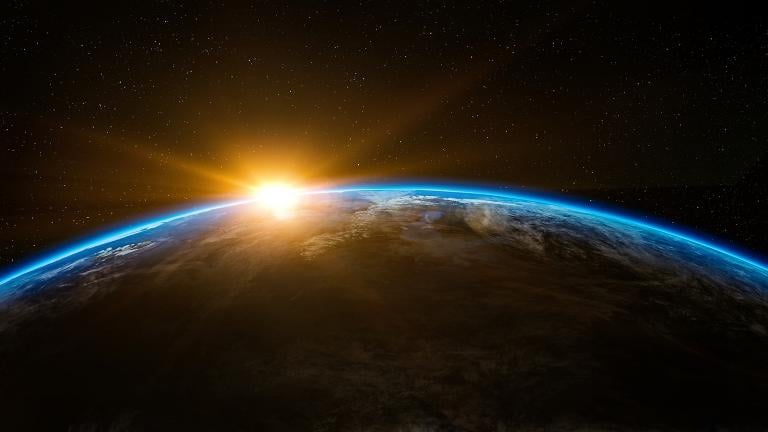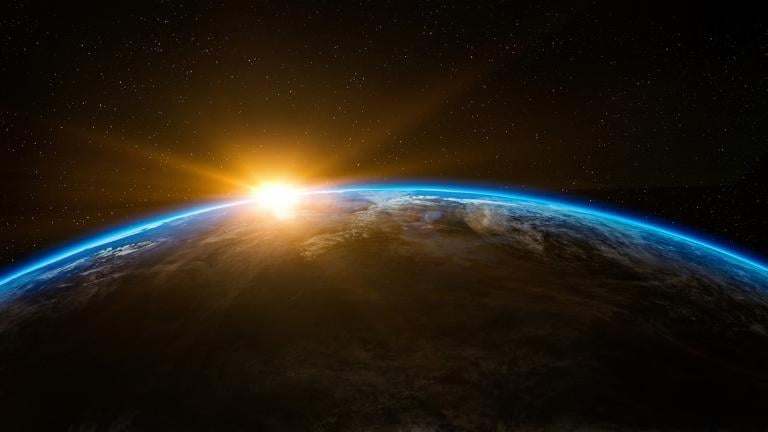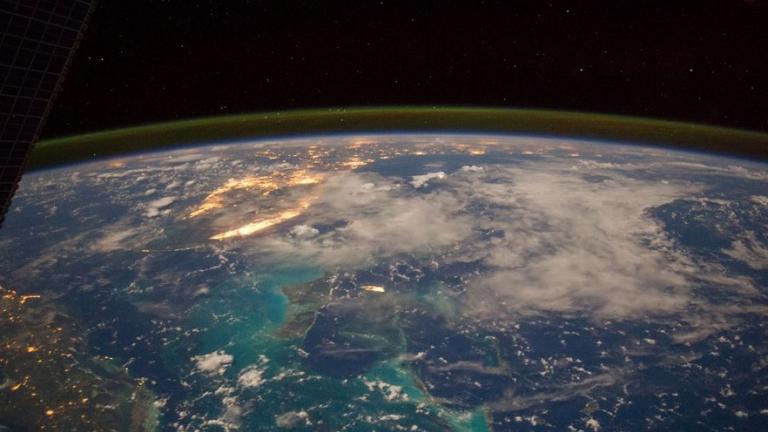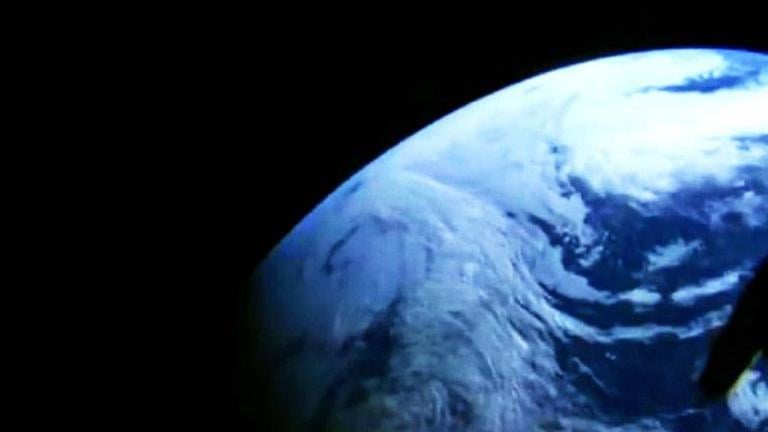On Tuesday, the clock was again set at 90 seconds to midnight — the closest to the hour it has ever been, according to the Bulletin of the Atomic Scientists, which created the clock in 1947.
Doomsday Clock
“We are really closer to that doomsday,” former Mongolian president Elbegdorj Tsakhia said Tuesday at the Bulletin of Atomic Scientists annual announcement rating how close humanity is from doing itself in.
“Steady is not good news,” said members of the Bulletin of the Atomic Scientists. “We are stuck in a perilous moment.”
The Bulletin of the Atomic Scientists on Wednesday revealed its annual indicator of the world’s vulnerability to catastrophe, stating the COVID-19 pandemic showed how ill-prepared the global community is to handle a substantial threat.
The world is closer to global catastrophe today than at any point since World War II, according to a group of international nuclear and climate scientists.
The clock hands didn’t move this year, but that’s no “sign of stability,” says Rachel Bronson, president and CEO of the Bulletin of the Atomic Scientists. Instead, she calls it a “stark warning.”
For first time since the height of the Cold War, the hands of the Doomsday Clock, a symbolic indicator of how close we are to a global catastrophe, have been moved to 11:58 p.m. This is the closest the clock has been to midnight since 1953.
Is rhetoric edging us closer to doomsday? Last week, the Doomsday Clock edged 30 seconds closer to midnight, putting the world two and a half symbolic minutes away from global annihilation.
It’s 2016 and we’re still three metaphorical minutes away from global doom. The Bulletin of the Atomic Scientists say global warming and nuclear weapon proliferation pose serious threats to mankind.
The hands of the Doomsday Clock, a symbolic indicator of how close we are to a global catastrophe, have been moved to the 11:57 position. Kennette Benedict, executive director of Bulletin of the Atomic Scientists, explains her publication's decision to move us closer to midnight.
The so-called Doomsday Clock is one minute closer to global catastrophe. But the reasons for the change may not be what you think. We talk with the executive director of the journal that decides when and why to move the minute hand.

